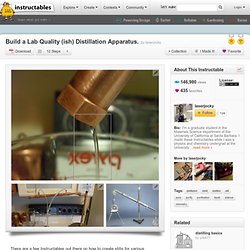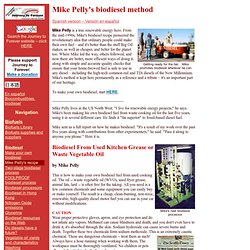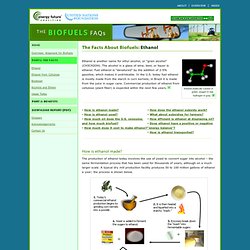

Www.erowid.org/archive/rhodium/pdf/still.pdf. Build a Lab Quality (ish) Distillation Apparatus. There are a few Instructables out there on how to create stills for various purposes.

Usually these include a large amount of small diameter, flexible copper refrigerator tubing. While these stills can be quite effective, there is just something a little hokey about them. Especially the part where you run a large amount of expensive copper tubing through a bucket of standing water to cool the condensate. Then there's the issue of a high surface area on the interior of the tubing, which makes small volume distillations difficult to impossible. Plus they're bulky, unwieldy, and they look like a meth lab. I say there is a better way. By using a small amount of 1/2" and 3/4" copper pipe, it is possible to build a lightweight, compact, collapsible, interchangeable, universal distillation apparatus for anything you could possibly hope to distill.
Used BioEthanol Plant in Eastern Europe. How Artificial Photosynthesis Works" If the smartest energy source is one that's abundant, cheap and clean, then plants are a lot smarter than humans.

Over billions of years, they developed perhaps the most efficient power supply in the world: photosynthesis, or the conversion of sunlight, carbon dioxide and water into usable fuel, emitting useful oxygen in the process. In the case of plants (as well as algae and some bacteria), "usable fuel" is carbohydrates, proteins and fats. Humans, on the other hand, are looking for liquid fuel to power cars and electricity to run refrigerators. But that doesn't mean we can't look to photosynthesis to solve our dirty-, expensive-, dwindling-energy woes. Fermenters and Bioreactors. Biodiesel recipe from Mike Pelly. Mixture: Waste vegetable oil (WVO) -- used cooking oil, fryer grease, animal fats, lard Methanol (CH3OH) -- 99%+ pure Sodium hydroxide (NaOH -- caustic soda, lye) -- must be dry Titration: Isopropyl alcohol (rubbing alcohol) -- 99%+ pure Distilled water Phenolphthalein solution (not more than a year old, kept protected from strong light) -- "Phenol" or "Phenol Red" from swimming pool or hot tub supply stores may not be the same as phenolphthalein; it can be used but the directions for use may be different.

List: E10 Engine Damage & Performance Issues. Listed below are examples of problems and inconvenience that may occur from ethanol (alcohol) and contaminated E10 gas.

IMPORTANT: Most newer engines can run safely on E10 blends when gas is fresh and of high quality. Some engines are not designed for use of gasahol, and even following all precautions will cause damage. (Check your owner's manual for fuel recommendations). Bacteria Use Hydrogen, Carbon Dioxide to Produce Electricity. CONTACT: Jim Sliwajsliwa@asmusa.org DENVER, CO – May 19, 2013 – Researchers have engineered a strain of electricity-producing bacteria that can grow using hydrogen gas as its sole electron donor and carbon dioxide as its sole source of carbon. Researchers at the University of Massachusetts, Amherst report their findings at the 113th General Meeting of the American Society for Microbiology. “This represents the first result of current production solely on hydrogen,” says Amit Kumar, a researcher on the study who, along with his co-authors are part of the Lovley Lab Group at the university.
Under the leadership of Derek Lovley the lab group has been studying Geobacter bacteria since Lovley first isolated Geobacter metallireducens in sand sediment from the Potomac River in 1987. This research was supported by funding by the U.S. This research was presented as part of the 2013 General Meeting of the American Society for Microbiology held May 18-21, 2013 in Denver, Colorado.
how to make them and how to use them. Heating from Large Wood Chip Compost Piles Jean Pain The Methods of Jean Pain: Or another kind of garden, Ida Pain, 1980.

This book is out of print, and I was not able to find any used copies of this for sale. If you search for "The Methods of Jean Pain", many free (questionable?) Download sources come up. Claims to be the official Jean Pain family website and sells a pdf copy. Mother Earth News has some articles by/on Jean Pain -- search for Jean Pain Finding Mother Earth News articles... The Biofuels FAQs: The Facts About Biofuels: Ethanol.
As of February 2007, the ethanol production capacity of the United States was estimated at 5.6 billion gallons per year.

An additional capacity of 6.2 billion gallons per year was under construction, which will bring the total capacity to 11.8 billion gallons per year spread across 23 states. Corn represents roughly 95% of the feedstocks used in those facilities. The corn used for ethanol production is field corn typically used to feed livestock, not the sweet corn marketed for human consumption. Nearly 40% of the nation’s ethanol production capacity is farmer-owned. In the 2006 State of the Union address, President Bush announced a goal of replacing “more than 75% of our oil imports from the Middle East by 2025.”